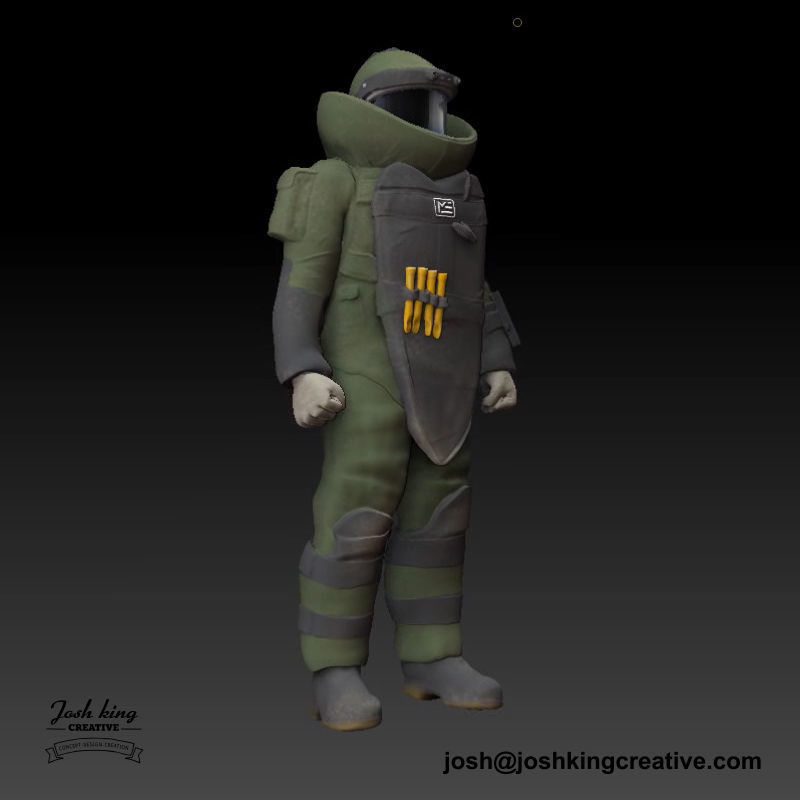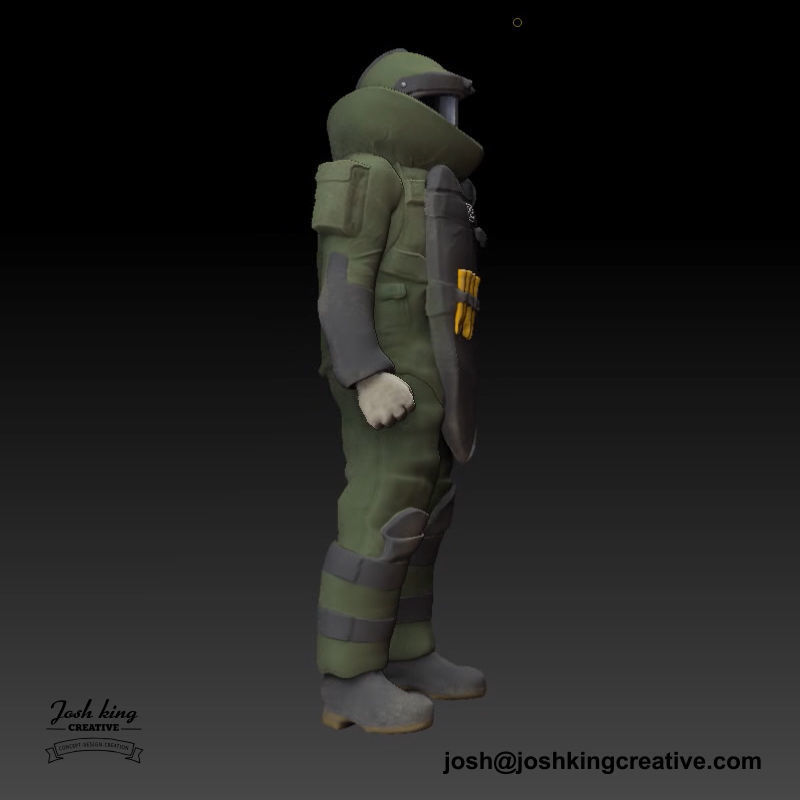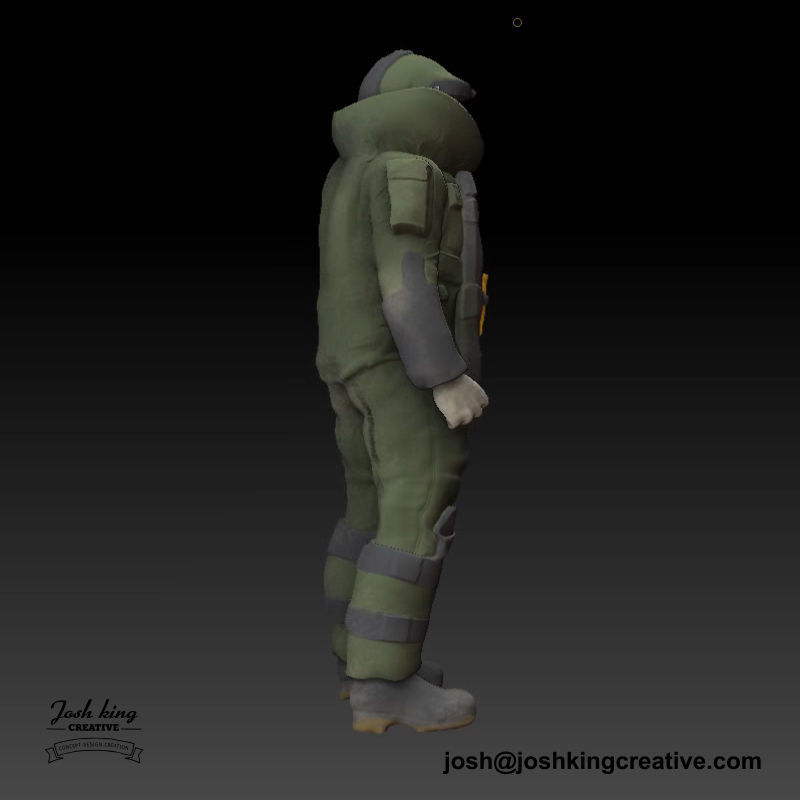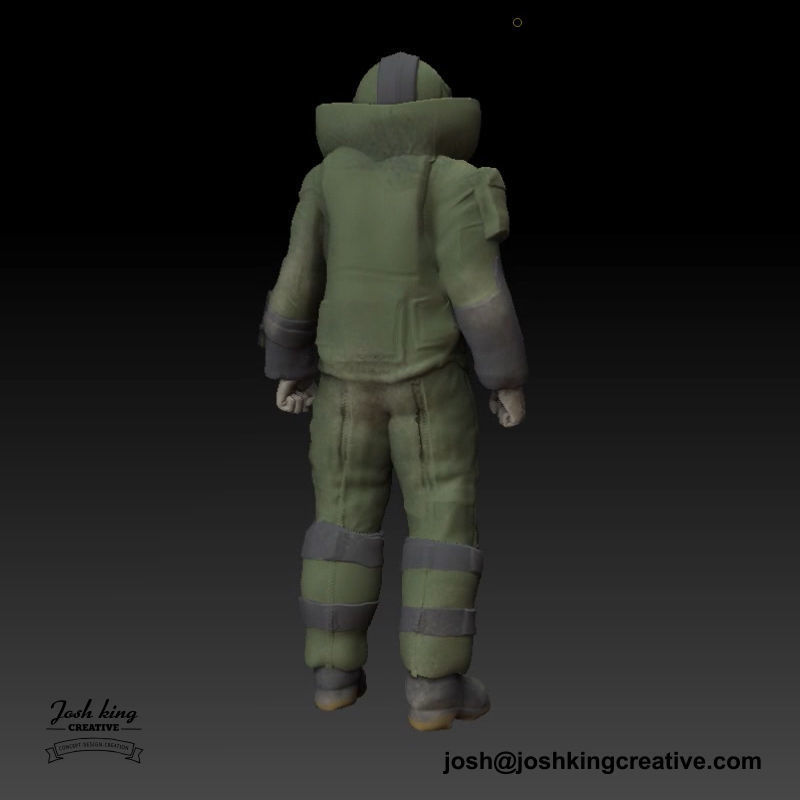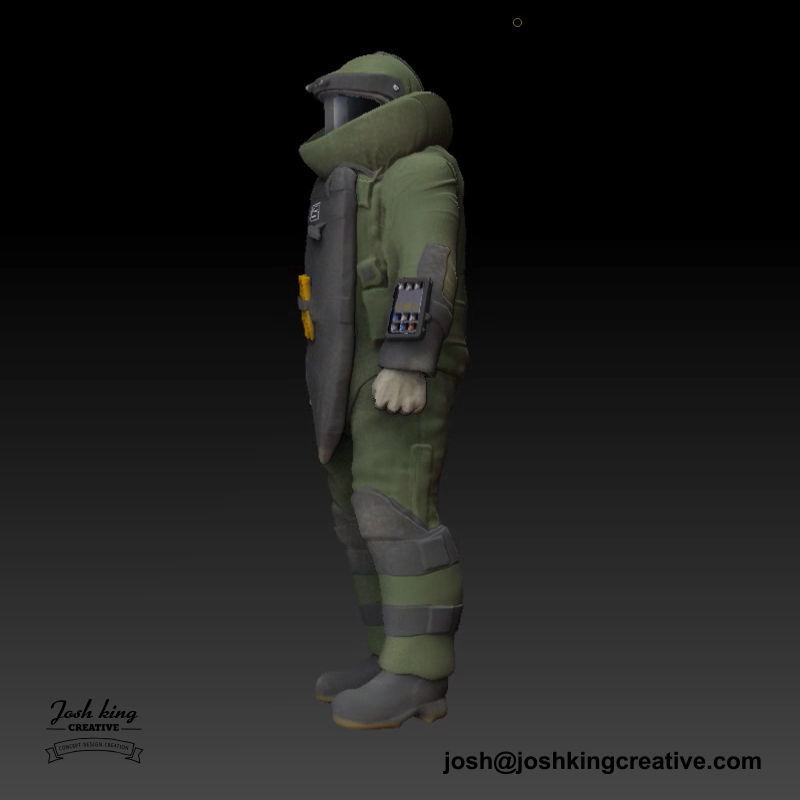
EOD Tech in bomb suit 3D print model
Bomb disposal is an explosives engineering profession using the process by which hazardous explosive devices are rendered safe. Bomb disposal is an all-encompassing term to describe the separate, but interrelated functions in the military fields of explosive ordnance disposal (EOD) and improvised explosive device disposal (IEDD), and the public safety roles of public safety bomb disposal (PSBD) and the bomb squad.
Modern EOD Technicians across the world can trace their heritage to the Blitz, when the United Kingdom's cities were subjected to extensive bombing raids by Nazi Germany. In addition to conventional air raids, unexploded bombs (UXBs) took their toll on population and morale, paralyzing vital services and communications. Bombs fitted with delayed-action fuzes provoked fear and uncertainty in the civilian population.
The first UXBs were encountered in the autumn of 1939 before the Blitz and were for the most part easily dealt with, mostly by Royal Air Force or Air Raid Precautions personnel. In the spring of 1940, when the Phony War ended, the British realized that they were going to need professionals in numbers to deal with the coming problem. 25 sections were authorized for the Royal Engineers in May 1940, another 109 in June, and 220 by August. Organization was needed, and as the Blitz began, 25 Bomb Disposal Companies were created between August 1940 and January 1941. Each company had ten sections, each section having a bomb disposal officer and 14 other ranks to assist. Six companies were deployed in London by January 1941.
The problem of UXBs was further complicated when Royal Engineer bomb disposal personnel began to encounter munitions fitted with anti-handling devices e.g. the Luftwaffe's ZUS40 anti-removal bomb fuze of 1940. Bomb fuzes incorporating anti-handling devices were specifically designed to kill bomb disposal personnel. Scientists and technical staff responded by devising methods and equipment to render them safe, including the work of Eric Moxey.[8]
The United States War Department felt the British Bomb Disposal experience could be a valuable asset, based on reports from U.S. Army, Navy, and Marine Corps observers at RAF Melksham in Wiltshire, England in 1940. The next year, the Office of Civilian Defense (OCD) and War Department both sponsored a bomb disposal program. After the attack on Pearl Harbor, the British sent instructors to Aberdeen Proving Ground, where the U.S. Army would inaugurate a formal bomb disposal school under the Ordnance Corps. Col. Thomas J. Kane became the U.S. Army Ordnance Bomb Disposal School commandant, and later served as ETO Director of Bomb Disposal under Dwight D. Eisenhower.[9] In May 1941, British colleagues helped establish the Naval Mine Disposal School at the Naval Gun Factory, Washington, D.C. Concurrently, the U.S. Navy, under the command of Lt. Draper L. Kauffman (who would go on to found the Underwater Demolition Teams – better known as UDTs or the U.S. Navy Frogmen), created the Naval Bomb Disposal School at University Campus, Washington, D.C..
The first US Army Bomb Disposal companies were deployed in North Africa and Sicily, but proved cumbersome and were replaced with mobile seven-man squads in 1943. Wartime errors were rectified in 1947 when Army personnel started attending a new school at Indian Head, Maryland, under U.S. Navy direction. That same year, the forerunner of the EOD Technology Center, the USN Bureau of Naval Weapons, charged with research, development, test, and evaluation of EOD tools, tactics and procedures, was born.



